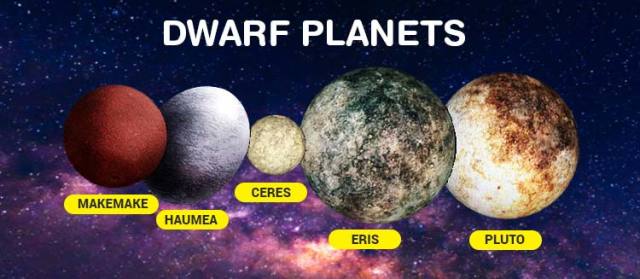Poor Pluto. As if this faraway frozen ball’s long journey around the sun—a squashed trajectory that takes 248 years—wasn’t strange enough, Pluto’s story took an even stranger turn in 2006, when astronomers stripped it of its status as our ninth planet. But Pluto’s loss was actually a gain for wannabe astronauts. Suddenly, the solar system offered new “planets” to explore. Astronomers coined the term “dwarf planet” to reclassify Pluto, which would become a representative of this new club of heavenly bodies. And membership is growing fast.
While standard planets must meet three criteria, dwarf planets only need to check off two: They must orbit the sun and be of sufficient size for their gravity to squish them into a spherical shape. Along with Pluto, astronomers have identified four other dwarf planets. Most of them join Pluto in the so-called Kuiper Belt of comets-in-waiting beyond the orbit of Neptune. There’s Eris, which rivals Pluto in size, and egg-shaped Haumea, one of the fastest spinning objects in the solar system (its “day” lasts just four hours). Mighty Ceres, the largest of the asteroids at nearly 600 miles (966 kilometers) in diameter, joins the dwarf-planet club from the Asteroids Belt. Astronomers suspect that dozens—possibly hundreds—of dwarf planets await discovery. Perhaps someday you’ll find one of these itty-bitty worlds.

